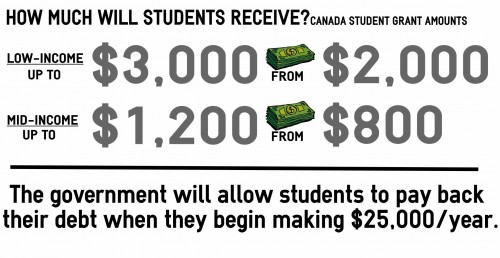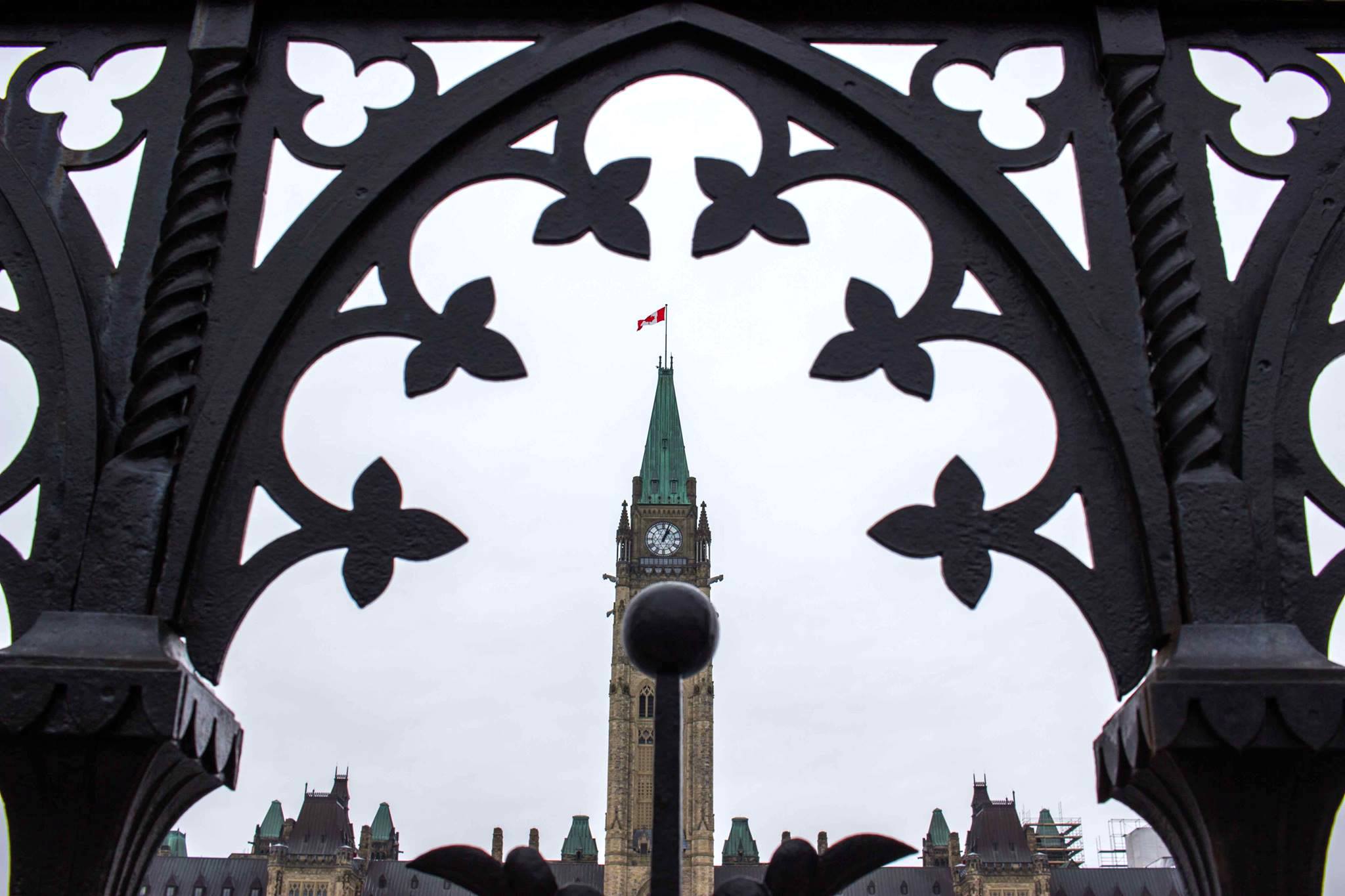Students from low- and middle-income families will get larger federal grants for paying tuition, Canada’s finance minister Bill Morneau announced in his budget March 22.
Morneau’s plan will see Canada Student Grant amounts increase by 50 per cent. Low-income students will receive up to $3,000 of federal student grant money, a jump from $2,000 per year. Middle-income students will see up to $1,200 of federal grants, up from $800. Part-time students will see up to $1,800, an increase from $1,200.
The increased funding will be in place for the 2016-17 school year.
“It can be the difference between getting a degree and dropping out,” Morneau said in his speech. “And that can change a life.”
The minister said the changes will affect around 250,000 low-income, 100,000 middle-income, and 16,000 part-time students. According to Morneau’s projections, the assistance will cost $1.53 billion over five years. The changes will only affect undergraduate students.
Anne-Marie Roy, deputy chairperson for the Canadian Federation of Students (CFS), said she’s happy with the changes.
“Not only is that good for alleviating [financial burden], I think it’s also a recognition that tuition fees do represent an important barrier for students accessing college or university education,” she said.
Changes to student debt repayment and eligibility
The government will also allow recent graduates to delay student loan payments until they’re making more than $25,000 per year, an increase of nearly $5,000. That means if a student leaves university and works full-time in a job at Ontario’s minimum wage of $11.25, they will be below the $25,000 cut-off.
But the assistance likely has no effect for students working full-time jobs at $12 or more, who won’t make less than $25,000 per year and will therefore still have to pay their loans.
The assistance also doesn’t cover loans received through the Ontario Student Assistance Program (OSAP) or the federal interest owed on OSAP loans.
Viviane Bartlett, the executive director of the Canadian Alliance of Student Associations (CASA), said a $25,000 threshold is “not enough.”
“CASA’s asking for $30,000 to be implemented. I think that would be more reflective of the realities,” she said. “I think $25,000 is a good first step. It’s the first budget, we’re going to be looking to see more in the future as well.”
Bartlett also welcomed the increased funding focused on student debt relief but said she’s looking to get “more significant increases” than this budget offers.
The government is also changing how eligibility for federal grants and loans will be assessed. Instead of students providing their income and financial assets earned while studying, they will need to make a not-yet specified contribution each year.
The change will allow students to work during their studies without worrying about becoming ineligible for grants or loans.
“We don’t know what the flat-rate contribution is going to look like yet, so there’s a lot of ifs and buts right now,” Bartlett said.
The flat-rate student contribution still must be negotiated “collaboratively” with the provinces, and will be implemented in the 2017-18 academic year. The government estimates students’ total contribution will be $49 million per year under the new system.
“It also reduces a lot of the burden of applying for loans, and it removes a lot of red tape,” Bartlett said. “It’s just a matter of seeing what [amount] that contribution is.”
It’s also unclear whether students who don’t qualify for federal grants or loans will still need to make contributions, which would add a burden to students helping pay for a system they don’t benefit from.
The budget stated changes to grants and loans will be covered by eliminating the existing tax credits that allowed students to claim back the costs of textbooks.

Jobs for young people
The budget also adds an additional $165.4 million for the Youth Employment Strategy, which includes the Canada Summer Jobs program.
These changes follow the Feb. 12 announcement that 35,000 additional summer jobs will be created for students under the program at a cost of $339 million over three years.
Universities/colleges and research
The federal government will spend up to $2 billion over three years on the Post-Secondary Institutions Strategic Investment Fund. The budget stated that the fund will support up to 50 per cent of the eligible costs of infrastructure projects at post-secondary institutions, in collaboration with provinces and territories.
Morneau also announced $95 million in new annual funding for graduate research through federal granting councils, with the lion’s share going to health, science and engineering research. The budget turns the focus back to basic research, as opposed to the previous Conservative focus on research intended primarily to aid the private sector.
“These investments all reflect our core belief that the advancement of basic science and the development of intellectual capacity is the foundation of innovation,” Morneau said.
“With this research funding, grad students can now do curiosity-based research, which is oftentimes what students are looking to do when they’re pursuing their grad studies,” Roy said. “So yes, this is very big for masters and PhD students.”
The Canadian Association of University Teachers (CAUT) welcomed the research and infrastructure funding as a step in the right direction.
“The Liberal government’s first budget is a welcome first step,” said David Robinson, executive director of CAUT. “There is a long way to go to make up for lost ground, but we’re pleased to see that we are moving in the right direction again.”

Indigenous post-secondary students
Although the Liberals plan to spend more than $3.5 billion on education projects for First Nations peoples, there was no mention of the Post-Secondary Student Support Program (PSSSP), which provides financial help to post-secondary Aboriginal Canadian students.
“We’re looking for more investments towards graduate students specifically, as well as Indigenous learners,” Bartlett said. “I think that there’s a bit of a missed opportunity to lift the two per cent cap on the [PSSSP].”
“It was in their platform and we had the impression that it was going to be a budget announcement, but it wasn’t,” Bartlett said.
The omission surprised advocates because Liberals have promised to implement all 94 recommendations of the Truth and Reconciliation Commission, including “adequate funding” for Indigenous post-secondary students.
–
The federal government projects a $29.4-billion deficit for the 2016-17 fiscal year. During the election, the Liberals projected a $10-billion deficit for the same period.
Morneau said in his speech the Liberal plan to grow the economy rests on investments to “boost our capacity to innovate and to grow our economy.”






